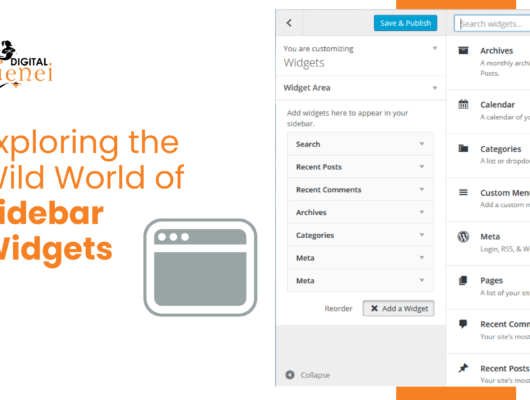Rapid Design: Quick and Dirty Ways to Get Your Website Up and Running
In the fast-paced digital landscape, getting your website live and functional is often a top priority. Whether you’re a startup, a blogger, or a small business owner, the need for speed in web design is undeniable. This article will guide you through rapid design techniques – swift and effective methods to get your website up and running without sacrificing quality.
Embrace Website Builders
Simplicity is the ultimate sophistication.
Wix, Weebly, and Squarespace: These platforms offer intuitive drag-and-drop builders. You can choose from a range of templates and have a functional site within hours.
WordPress with Elementor or Divi: WordPress is a versatile platform. Elementor and Divi are powerful plugins that simplify the design process, allowing for quick customization.
Opt for Pre-Made Templates
ThemeForest, and TemplateMonster: These platforms offer a vast array of pre-designed templates for various CMS platforms. Select one that aligns with your vision and customize it to suit your brand.
Google Sites, Carrd: For one-page or simple websites, Google Sites and Carrd provide easy-to-use templates for rapid deployment.
Leverage Content Management Systems (CMS)
A CMS is a tool to do more than just create, edit, and publish web content; it is a vehicle to transform and optimize the customer experience.
WordPress, Joomla, Drupal: These CMS platforms offer a wide range of plugins and extensions that can quickly add functionality to your site.
Shopify, WooCommerce: If you’re setting up an e-commerce site, platforms like Shopify and WooCommerce provide all-in-one solutions for rapid online store development.

Prioritize Essential Content
Clear Messaging: Your homepage should convey who you are, what you do, and what visitors can gain from your site in a matter of seconds.
Effective Call-to-Actions (CTAs): Guide visitors on their journey. Use compelling CTAs to direct them towards desired actions like signing up for a newsletter or making a purchase.
Focus on Mobile Optimization
By 2025, 72% of the global internet users will be accessing the web solely via their smartphones.
Responsive Design: Ensure your website looks and functions well on various devices. Most website builders and templates are optimized for mobile.
Mobile-First Design: Start your design process with the mobile version. This ensures that the most critical elements are prioritized for smaller screens.
Streamline Your Content Creation Process
You can't use up creativity. The more you use, the more you have.
Use Stock Images and Videos: Platforms like Unsplash, Pexels, and Pixabay offer a treasure trove of high-quality visuals for your website.
Content Generation Tools: Tools like Grammarly, Hemingway Editor, and Canva can assist in creating polished and visually appealing content.
Don’t Neglect SEO Basics
Good SEO work only gets better over time. It's only search engine tricks that need to keep changing when the ranking algorithms change.
Keyword Research: Identify relevant keywords and incorporate them naturally into your content.
Meta Tags and Descriptions: Craft compelling meta titles and descriptions to improve your site’s visibility in search results.
Test and Iterate
It’s not that we need new ideas, but we need to stop having old ideas.
User Testing: Get feedback from friends, family, or online communities. Their fresh eyes might spot issues you missed.
Monitor Analytics: Use tools like Google Analytics to track user behavior. Identify areas for improvement and adjust your design accordingly.
Conclusion: Swift Success in Web Design
Rapid design doesn’t mean cutting corners; it means using efficient tools and strategies to create a functional website quickly. By leveraging website builders, templates, and content management systems, and prioritizing mobile optimization and SEO basics, you can have your website up and running in no time. Remember, the key is to focus on essential content, streamline your creation process, and continuously test and refine. With these techniques, you’ll be well on your way to a successful online presence.





